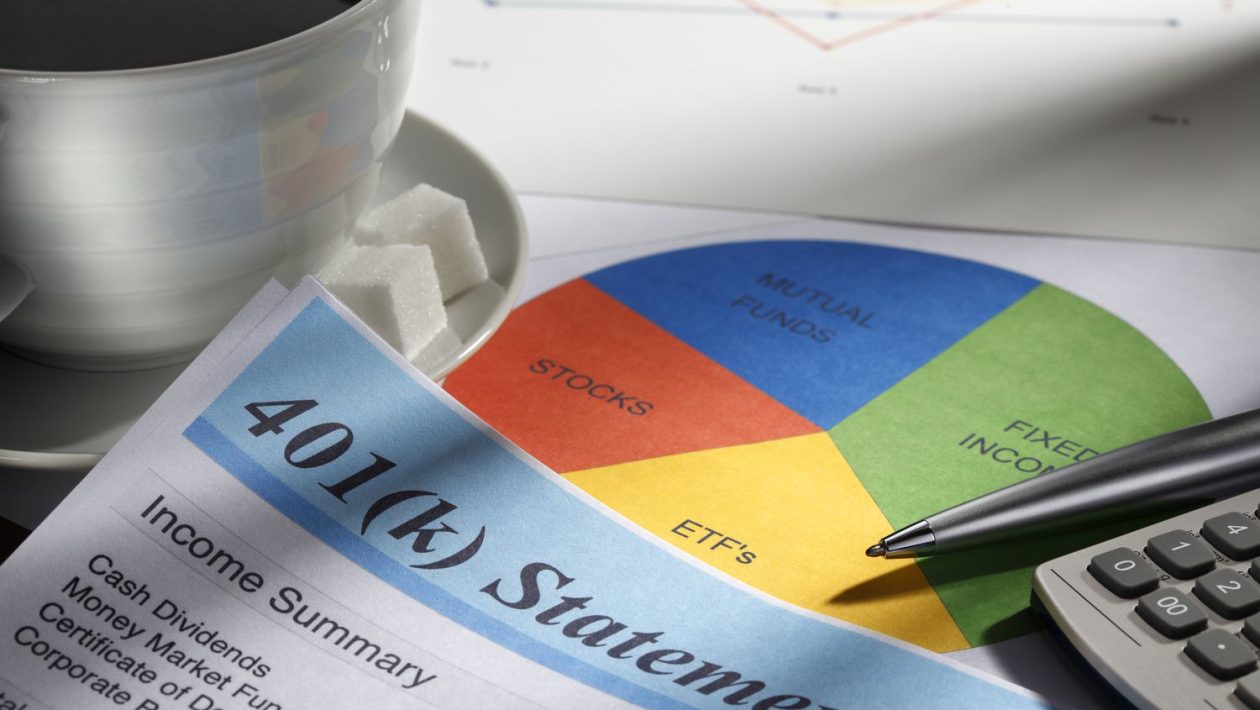A 401(k) plan is more than just a “retirement savings account.” It’s an investment portfolio with an annual rate of return. You factor that return in whenever you ask the question, “How much do I need to retire?” Like any other portfolio, your 401(k) contains “holdings.” Those can include stocks, bonds, mutual funds, and retirement money market accounts. Read on to learn more about the difference between a 401(k) and a retirement money market account.
What is a retirement money market account?
Modern portfolio construction is done by balancing investments based on risk. Stocks, aka equities, are an aggressive investment because volatility makes them a higher investment risk. Bonds are less risky, so they’re viewed as a moderate or conservative investment. Money market accounts are cash savings accounts, so there’s no risk (and minimal return).
A retirement money market account is usually a holding inside a 401(k) or IRA that is used to accumulate cash before its invested in stocks, bonds, or alternative investments. It differs from a traditional money market account because it’s controlled by the plan administrator. The account holder can’t withdraw money from it without incurring an early withdrawal penalty.
Why would you need a retirement money market account?
Portfolio managers use retirement money market accounts as part of a diversification strategy to offset stock market volatility. RMMAs generate a small but stable return while other holdings may take temporary losses. In times of extreme volatility or market crashes like we saw in 2020, problem holdings can be sold, converted to cash, and moved to the money market account.
Retirement money market accounts can be used to accumulate funds for future stock buys. They add liquidity to a portfolio that gives the portfolio manager more freedom to make investments when they become available. This flexibility improves the chances of your 401(k) generating a higher return. That doesn’t happen without proactive investing.
How portfolio managers drive 401(k) returns
Economist Harry Markowitz’s 1952 paper titled “Portfolio Selection” is widely credited as the foundation that modern portfolio theory (MPT) was built on. It advocates the construction of an investment portfolio using a variety of different holdings based on their risk factors and expected rate of return. In layman’s terms, that means diversifying your portfolio.
401(k) plans are investment portfolios that are constructed based on the account holder’s appetite for risk. That risk is assessed with a questionnaire where the investor selects the category of risk that they feel most comfortable with. Aggressive investors will see riskier holdings in their account. Conservative investors like bonds and money market accounts.
The point of MPT was to provide balance in a portfolio that will drive a steady return. We’ve already covered how retirement money market accounts are used in that equation. You can add in stocks, bonds, mutual funds, ETFs, real estate (REITs), and alternative investments like cryptocurrency and NFTs to achieve that balance.
The Bottom Line
Retirement money market accounts are a holding inside a 401(k), not a competing investment strategy. They are used to increase liquidity in the portfolio, creating more flexibility for portfolio managers to make new investments. They can also protect your retirement savings from stock market volatility and help balance other investments that have a higher risk level.





